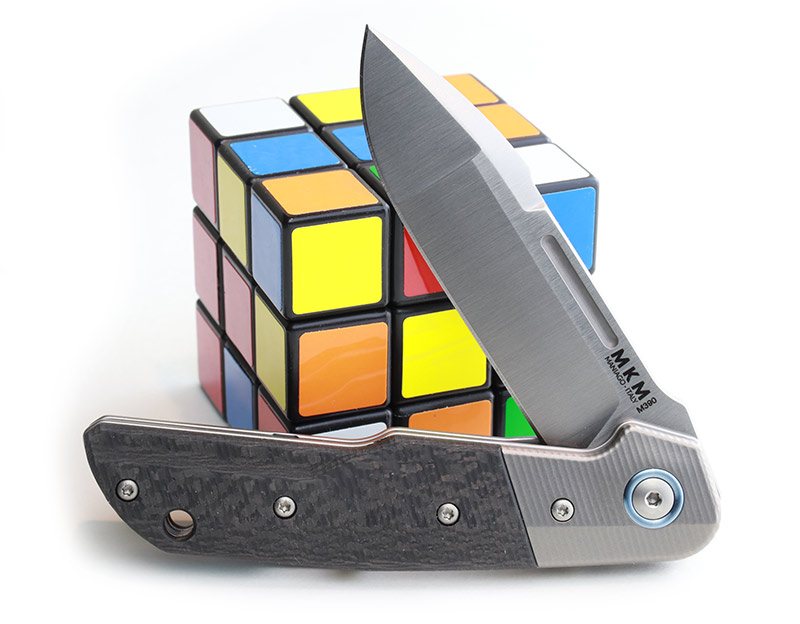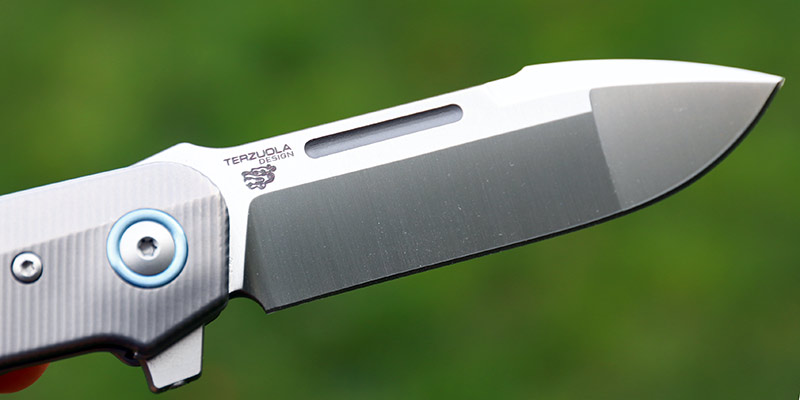We independently evaluate all recommended products and services. Any products or services put forward appear in no particular order. If you click on links we provide, we may receive compensation.
Another knife brand hits the main stage. Yes folks, it’s true. Not only do we need to content with seemingly never-ending mid-level Chinese manufacturers making themselves known, but now we need to start paying attention to the Italians.

Key Specs: MKM Clap
Background
MKM, also known as Maniago Knife Makers consists of a grouping of Italian knife makers and maintains a headquarters in Maniago. Manufacturing houses such as Fox, Viper, and LionSteel produce the knives that MKM offers, with LionSteel producing the MKM Terzuola Clap.

MKM intends to provide a high-end product seeking to appeal to the mid to upper end of customers that tend to purchase pocket knives. It doesn’t hurt at all that legends such as Bob Terzuola, and others such as Lucas Burnley have both added to the stable of knives being offered.
Another nice element from MKM is that they tend to offer a wide range of styles within the model that you may have interest in. What we have seen so far is that G10 scales all the way up to marbled carbon fiber can be found within the same model line. Same goes for blade steel. We have seen M390 as well as Damasteel variants that allow you to select the level of finish and price that works best for your wants and needs.

As for the MKM Clap, it is sporting a very attractive satin finish M390 blade and a carbon fiber handle with a titanium bolster. It is an EDC flipper that can be modified to have the flipper tab removed. For those in Europe and similar locations where flipper knives are against the law, the Clap provides easy removal of the flipper tab via a simple screw to make it a standard old school two handed opening deployment knife. Much like some other LionSteel products, this tactic has been successful both from a production execution standpoint, as well as sales.
First Impressions
The MKM Clap was a product we’ve been interested in for a while now. It was exciting to see it in the flesh, and not just in picture. At first side we thought it was a knockout. Who can complain about classic styling from Bob Terzuola, carbon fiber, and titanium, right? But as we got it into our hands and held it, the weight became the first thing that we truly paid attention to.

At about 4.06 oz for a 2.875 cutting edge we are in a small but stout EDC category. It just feels heavier that one might initially expect. If we were to offer a recommendation, we would suggest that they try to reduce weight by sweetening some of the stainless steel liners on Clap. As this is a liner lock, we thought it worked well but if they just reduced the weight some, or even used titanium instead of steel with skeleton construction, the Clap may reduce weight and be within the low 3 oz range putting in closer alignment with some other gentleman knives in this category.
Aside from the weight, the finishing was rather well done, save for the way the carbon fiber matched and lined-up with the titanium bolster. The transition was not subtle, and you can easily feel where the carbon fiber stops, and the titanium milled bolster area begins. This also made for a bit of a hot spot. As this occurs on both sides of the handle scales, the hot spots and lack of perfect finishing really become apparent.

Another notable impression that we had almost immediately was the pivot collar and pocket clip. Both anodized blue titanium, the pivot collar dresses up the knife and provides a solid punch visually. The pocket clip is also this wonderful anodized blue that is polished and looks fantastic. Once again however, not all is perfect. We noticed that the ends of the clip could have been better rounded. As a result, an obvious and perceivable point is felt every time the bottom of the clip is touched. But all in all, it is a very attractive knife.
Action is very good. It is snappy and deployed with the flipper with a smooth way about it. It was also very quiet… almost eerily so. Something about the action has a muted sound. We would not classify the action speed as fast, but it also was not slow in any way.

Closing the knife with the liner lock was comfortable and the blade was able to fall under its own weight with a slight flick of the wrist downward. Yet this is not really a fidgets knife. It has good action and is on bearings, but the speed of open and close may not make all fidget loving knife folk select this as a fidget choice. Even still, our first impressions of the action were very positive. We will talk more on this in just a bit.
Feel In-Hand
Once the knife is in your hand, you can notice that it is a bit hefty. The handle scales are also a bit wide at 0.875” (and 0.56” thick) for a smaller size EDC. That same width does add to overall comfort and utility in the hand. Our medium sized fingers were just able to get a four-finger grip on the predominantly carbon fiber handle when deployed. The Clap is about 7.24” in length overall when opened but feels like it punches above its size class. The stainless-steel liners on this frame lock flipper are not milled out, and as a result the weight makes for a solid feeling product.

Now let’s discuss the action. The MKM Clap has a very smooth action, running on bearings and deploying the knife neatly into position with a light switch type motion. It does not have a very strong detent. We would gauge it as low to medium type detent. However, they managed to adjust the detent and action, the entire knife feels muted when deployed and retracted via the liner lock. It is very interesting to feel this knife work, because it has an almost stealthy and quiet characteristic that is a bit unusual for a flipper these days. Ultimately, we enjoyed the refreshing subtlety of the knife’s action.
When closing the knife from the deployed position we felt it was easy enough to use the liner lock. We would certainly welcome some sculpting or contouring of the liner to assist in the comfort of the closing of the lock, but it performs well as it is. One thing is for sure, the milled lines found both on the titanium bolsters and the carbon fiber scales make the knife feel like you have a strong grip. It also makes the Clap look very attractive.

The carbon fiber was without voids of any kind and looked just great. Also, the spine of the blade was rounded and finished. It was a great feel in hand, and the blade design is truly what makes the MKM Clap shine. It is a satin finish blade after all… Sorry, knife reviewer humor. Let’s just move on to the details and bits of the MKM Clap.
Real World Usage
We have had our MKM Clap for about 3 weeks. Doing that time, we have used it as the primary right side carry in our EDC setup. With that said, we feel comfortable providing our findings regarding our experiences with it during that time even though we did not deploy the knife that often during these few weeks. So, granted we have not carried it for months on end, but we did make sure that not only was it the primary EDC but that some simple testing and chores also were performed with it. The results were quite interesting.

The 3D milled pocket clip is a bit stiff but stayed in pocket without issue. When we deployed the knife, we often used it for cutting standard packages and some household related tasks. The MKM Clap was able to hold up and work as an effective EDC tool. Did it standout in any way – not really. But that is in no way a bad thing.
From the perspective of deployment, the Clap was reliable and easy to deploy. Without ever having a fail with the flipper action, the MKM Clap was always at the ready when I wanted it to be. It is also a rather quiet knife to deploy, making it somewhat stealth in operation. Let’s get into the testing phase of things where we had some fun trying to put the MKM to its paces.

We took the opportunity to test the MKM Clap under stressful measures that many people would not even wind up perform when using an EDC such as the Clap. These tests are designed to put the knife through some traditional testing as well as a few tests that are used to judge overall durability of the knife and the blade.
Cardboard Cutting Test
The MKM Clap has a flat ground satin drop point profile. With a blade length of about 3 inches and a fuller grove that is more for aesthetics, we were not too sure how it would perform as a cutter in this fashion. With gloves on we started cutting slices of cardboard. Comfort was not great. You can just about get four fingers on the handle without gloves, but with them it was a three-finger affair.
The knife is a little thick behind the edge, but not that bad. The MKM Clap came with a sharp edge and we always appreciate that. It managed to cut through several boxes of cardboard. We however did need to work at it a bit, and it had it was not all that comfortable for this task. If we needed to cut cardboard, this knife will cut it, but it would not be our first choice.
Rope Cutting Test
The rope cutting test is designed to test the edge retention of the MKM Clap’s Bohler M390 blade. We often use twine for these rope tests, and we have continued that trend. Attempting this test without gloves, we started cutting in about one-inch cuts. The MKM Clap showed itself as a wonderful rope cutter. Though again not the most comfortable when cutting repeated draw cuts, and with some very notable hot spots by the start of the bolsters and on the pocket clip, the knife still performed very well.
The M390 steel is the real deal and appears to have been very well heat treated. We cut, and we cut, and we cut. After about 8 feet of rope we finally started to notice that the working edge was starting to wear (forcing us to use more force with a saw motion). After almost 12 feet we found that the knife was about ready for a necessary sharpening.

Looking at the edge, it was straight with no rolls, but rather dull. We are confident that even if we stropped it, it would have been able to be restored to a somewhat reasonable working edge. However, in our case we did sharpen the knife on our Edge Pro Apex Pro system. It sharpened up just fine and the edge was back to a hair shaving sharpness. We were really impressed by the performance of this blade during the test. We also gave high praise to the relative ease of sharpening because of the profile of the blade, and how nice and sharp it came back to life.
Competitive Offerings
All these knives available at BladeHQ.
Aside from the plentiful variations available within the MKM model itself ranging in street price from about 220 to 350 dollars depending on scale finish material (and where you buy of course), some other options to consider include: GiantMouse Ace Biblio – Available in a few canvas micarta colors, this often-limited production flipper with a 2.875-inch blade made from M390 steel, this knife has a production offering direct from BladeHQ in a smooth carbon fiber scale finish. As a liner lock, the Biblio is rather ambidextrous with a wire carry pocket clip in tip-up position that can be moved on either side of the handle scales. At about 170 to 190 dollars, this is a very compelling knife, and makes for good competition to the MKM Clap.
GiantMouse Ace Biblio – Available in a few canvas micarta colors, this often-limited production flipper with a 2.875-inch blade made from M390 steel, this knife has a production offering direct from BladeHQ in a smooth carbon fiber scale finish. As a liner lock, the Biblio is rather ambidextrous with a wire carry pocket clip in tip-up position that can be moved on either side of the handle scales. At about 170 to 190 dollars, this is a very compelling knife, and makes for good competition to the MKM Clap.

 Massdrop X Ferrum Forge Gent Select – Produced by WE Knife Co., and designed by Ferrum Forge, the Gent is a gentleman’s carry on a budget. Available direct and exclusively through Massdrop, the Gent offers a few different handle scale materials as an overlay to what is essentially a framelock flipper. Materials include a choice of wood, carbon fiber, or G-10 options. The blade is made of S35VN stainless steel and is about 3 inches in length.
Massdrop X Ferrum Forge Gent Select – Produced by WE Knife Co., and designed by Ferrum Forge, the Gent is a gentleman’s carry on a budget. Available direct and exclusively through Massdrop, the Gent offers a few different handle scale materials as an overlay to what is essentially a framelock flipper. Materials include a choice of wood, carbon fiber, or G-10 options. The blade is made of S35VN stainless steel and is about 3 inches in length.
It offers a finger choil, as does the GiantMouse Ace Biblio, but the cost of the Gent is a lean 79 dollars that can top out at about 120 depending on handle material selected. Not always in stock, but when it is this knife is for sure the deal of the bunch when looking at price. It also offers a thin stainless steel polished deep carry tip-up pocket clip and is very slim making for very pocket friendly carry.

Final Thoughts
The MKM Clap is not a perfect knife. It is not the best EDC, and it is not the best all-around cutter. However, it is a very compelling package nonetheless. It is a very good-looking pocket knife and could easily be used as a gentleman’s knife with some tactical aspirations.
The Terzuola styled classic drop point blade made of M390 really makes it a gentleman’s EDC that can be a real usable pocket knife. Plus, the versatility of removing the flipper tab easily for a sleeker feel in pocket, or for legal reasons (as needed), the MKM Clap is both versatile and stylish.

We just wish it was a bit more refined on the handle scales with less sharp edges. The MKM Clap is 95 percent there, but if it was a bit smoother around some areas, we think this would be a home-run. We love the blade, and the look. We also really like the size, though it does feel a bit heavy and beefy which in our opinion fits well for this knife.
The ability to purchase a well-made Terzuola design that can be had for around 300 dollars or less (depending on where and when you buy) is not a bad thing at all. The MKM Clap offers a lot of positive attributes, as well as a few minor shortcomings that for EDC duty can easily be overlooked if you enjoy the aesthetic and design of the Clap model.
With multiple finishes to select from available, or Ti and Carbon fiber variant is one of several options such as G-10, Olive wood, Santos wood, or even a none-bolstered design in all G-10, or wood. The MKM clap really does try to be all things to all people, but in doing so lacks some refinement on our bolstered TI and carbon fiber MKM Clap. We feel that there is a lot to like, and also think that MKM is off to a strong start in the global market. If you are in the market for a small EDC and want something a bit upscale yet solid, the MKM Clap might just be the right folder for you.
- Sexy looks, nice action, excellent blade design, premium materials.
- Heavy, a few hot spots, took a little adjusting.
MKM Terzuola Clap
Quality/Performance - 72%
Value for Money - 67%
70%
If you are in the market for a small EDC and want something a bit upscale yet solid, the MKM Clap might just be the right folder for you.





